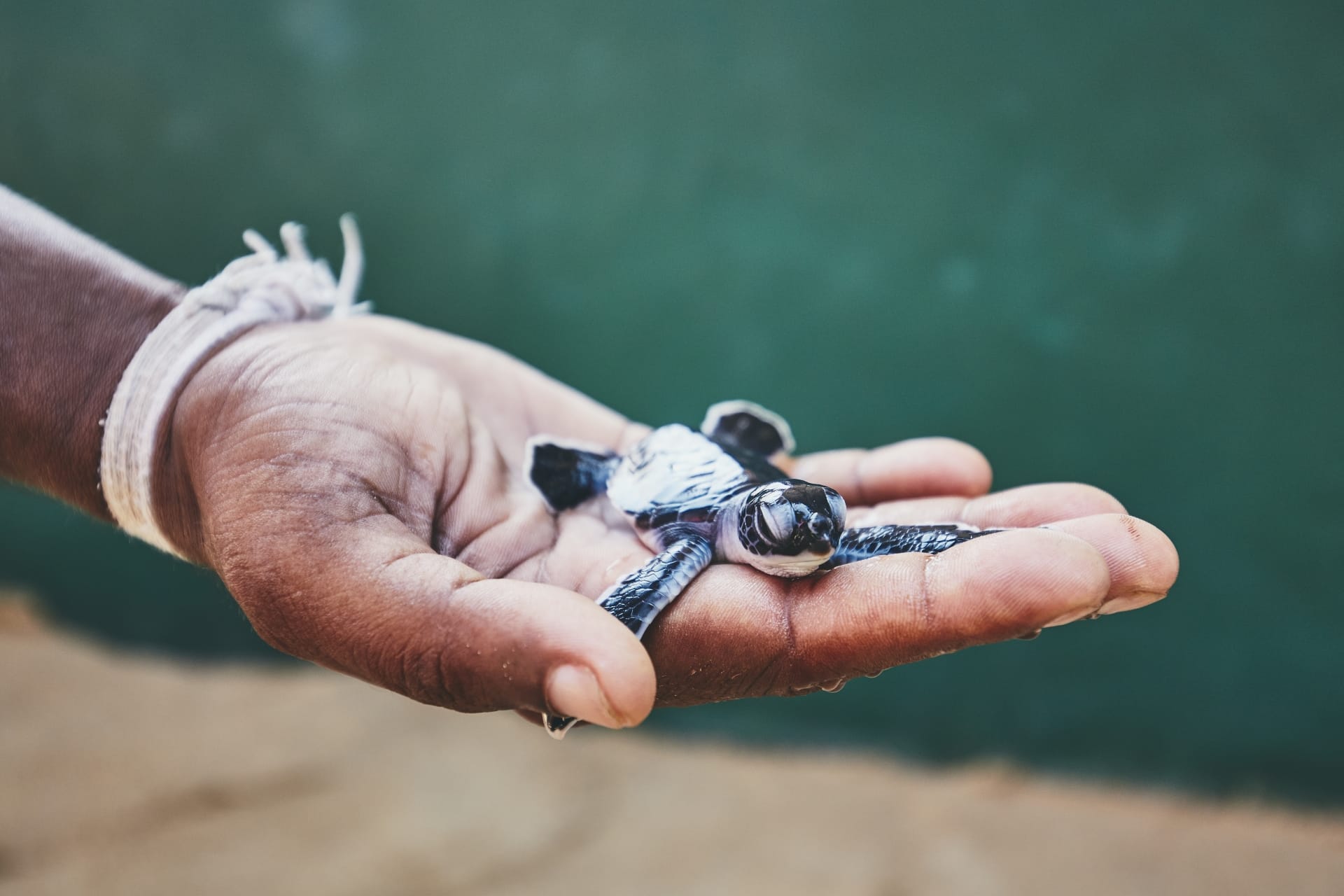Genomic conversations: animals in conservation and biodiversity research

How do you feel about the use of animals in biodiversity research – such as species conservation, biodiversity monitoring or evolutionary studies? In this conversation page, we’ll explore how animals are used in biodiversity research – including some of the benefits and risks and what the future may hold.
Key terms
Biodiversity
(or biological diversity) The variation of life at a genetic, species or habitat level.
Evolution
The process by which organisms change and adapt by natural selection.
Species
A group of closely-related organisms that have common physical and genetic characteristics and are able to interbreed to produce fertile offspring.
Genome
The complete set of genetic instructions required to build and maintain an organism.
Using animals in conservation and biodiversity research
While the concept of biodiversity is fairly straightforward, the reality is remarkably intricate.
Every organism, regardless of its size, has a significant impact on its habitat and interacts with other species in unexpected ways. With global changes driving unprecedented biodiversity losses, finding ways to protect biodiversity is crucial – not least because our existence depends on the air, fresh water and soils it provides.
Studying animals in their natural habitats can provide important data about biodiversity and the roles they play in their complex ecosystem webs. We can also gain insight into the impact of habitat destruction, climate change and human activities on the natural world. In turn, this can help develop effective conservation strategies to protect the natural world.
But as with all use of animals in research, it’s important to consider the potential harm or stress caused, such as through invasive procedures or captivity. This not only raises ethical concerns, but may also affect the accuracy of research results if the animals are not in a natural state.

Biodiversity is a measure of the variety of life: all the different kinds of animals, plants, fungi and microorganisms that make up the natural world. Between 1970 and 2016, there was a 68% fall in populations of mammals, birds, amphibians, reptiles and fish (as per the 2020 global Living Planet Index).
Different people, different opinions
Over the next few sections, you’ll hear from Cara, Grace and Hannah – three people connected to different departments on the Wellcome Genome Campus. They’ll share their thoughts and feelings about using animals in biodiversity research.

"I feel using animals in conservation and biodiversity research is vital. By sequencing the genome of as many species as possible, we can find ways to monitor and conserve their biodiversity and also use them to monitor and manage the quality of the environment."
Cara, Evolutionary biologist

"Ultimately, we use animals in biodiversity research to protect them and their ecosystems in the long term – so I’m overall positive about it."
Grace, DNA sequencing technician

"We should only use animals in research if the benefits to them outweigh the damage to their health and wellbeing. If an animal is going to be harmed, experiments should be rigorously planned to make the best use of the data collected."
Hannah, Cell biologist
There are many ways to study animals in the wild and wildlife species in research project, including:
- observing free-living animals in their natural environment, for example through GPS tagging or motion-activated cameras.
- capture, mark and release. This is the capture of free-living animals in their natural environment, collection of data (such as their weight or blood samples), tagging them for further observational studies, and returning them to their natural environment.
- catching free-living animals in their natural environment for destructive sample collection, such as tissue sampling or DNA extraction. This involves euthanasia of the animal.
- observing or monitoring animals in a captive setting, such as a zoo, aquarium or sanctuary.
- purpose-breeding wildlife species under laboratory settings.
These techniques vary significantly in their invasiveness and the impact they have on the animals being studied.
Different people, different views
“I think we can justify most uses of animals in conservation and biodiversity research, especially if disturbance is minimised. Sometimes, destructive sampling is the most appropriate way to collect all the data required. In this case, researchers have a responsibility to use all of the data effectively and do it at a time that least affects the population, such as during the breeding season.” – Grace
“If it’s necessary to sequence the DNA of animals, we should try to prioritise species that are abundant and won’t dramatically affect the ecosystem if some are removed from the population. I’m also not really comfortable with purpose-breeding vertebrates in laboratory settings.” – Cara
“Many of these activities can cause distress to the animals and significant disturbance can cause parents to abandon their young. Not only is this ethically questionable, but it can also bias the research. I think research should use more computational approaches to avoid using animals.” – Hannah
What are the different ways animals can be studied in biodiversity research?
The use of animals in biodiversity and conservation research can provide crucial insight into the natural world and help us find new ways to protect it.
Part of this is the formal documentation of different species. For example, more than a million insect species have been described – but it’s estimated there might be as many as 5.5 million species altogether, with most in the tropics. Establishing a baseline of the species that exist in different areas makes it possible to track how biodiversity changes over long periods of time.
This can be done with genomics to understand the DNA of all animals in an area, and later move to less invasive methods such as observation or non-destructive sampling to monitor in the long-term. Monitoring how populations change over time can indicate how biodiversity fluctuates and provide a measure for overall ecosystem health.
Another key benefit of using animals in research is the ability to identify and protect endangered species. By studying the behaviour and habitat requirements of threatened animals, researchers can develop effective conservation strategies that help to protect these creatures and their habitats.
For example, researchers have used tracking devices and camera traps to monitor animal populations and gather data on their movements and behaviour. This information can then be used to design more effective conservation measures, such as protected areas and wildlife corridors.
Did you know?
The BIOSCAN project is studying the genetic diversity of 1 million flying insects. Insects are collected and their DNA is analysed, providing a baseline knowledge of the diversity of insect species across the UK – so that biodiversity can be monitored and protected.
Different people, different views
“We can learn so much from using animals in conservation and biodiversity research – not only about the study species themselves but also the interactions within their environment which helps us to gain a wider understanding of the ecosystems we are trying to conserve.” – Grace
“By researching specific organisms, we can monitor and manage the environment. For example, I work with the nematode worm – understanding the different species in the wild and how their biodiversity changes can help us monitor pollution.” – Cara
“If the research is appropriately planned and takes into account an understanding of the population and habitat, then biodiversity research can be a powerful tool.” – Hannah
Are there benefits of using animals in biodiversity and conservation research?
While the use of animals in biodiversity and conservation research is important for understanding various species and ecosystems, there are also risks and limitations to consider.
One of the main risks is the potential harm or stress caused to the animals during research, such as through invasive procedures or captivity. This not only raises ethical concerns but may also affect the accuracy of research results if the animals are not in a natural or healthy state, leading to inaccurate or incomplete conclusions.
There is also a risk of bias in animal research, especially techniques that rely on capture. Certain species may be caught and studied more frequently than others, leading to unequal representation and potentially skewing results.
Additionally, fieldwork presents hazards to the researchers, such as the transmission of diseases from animals or the interaction with venomous species. These risks can be addressed by undertaking risk assessments and putting necessary precautions in place.
Different people, different views
“I don’t think we should use destructive sampling techniques on rare species. Rare species should be protected as they could be vital for recovery programmes.” – Cara
“It can be difficult to control variables in the wild, so sometimes it is necessary to breed wildlife species under laboratory settings, instead of observing them in the wild. However, this doesn’t accurately represent the wild, so behaviours might differ significantly.” – Grace
“It’s very important that the research practices don’t confound the results – it’s possible to interfere with a finely-tuned environment, which can bias conclusions. We also need to be careful not to cause distress to the animal or acclimatise them to human contact, which could endanger them to exploitative practices or poaching.” – Hannah
Are there risks or limitations to using animals in biodiversity research?
As with biomedical research, animals should only be used in research if there is no alternative. Researchers are required to follow a set of principles called the 3Rs:
- Replace animals with alternative models or avoid their use altogether. This doesn’t often apply to ecology as the animals are the objects of study – but computer modelling can increasingly provide alternatives for population studies, such as those looking at animal movements or predicting disease spread.
- Reduce the number of animals used and use statistical methods to determine the minimum number that can be used in an experiment. This can include using species-specific baits to avoid trapping unintended species.
- Refine the way experiments are carried out to minimise suffering and maximise welfare. This includes training researchers in humane methods of capture, handling and release and using non-invasive techniques where possible.
What are the laws and regulations surrounding the use of animals in biodiversity research?
Developments in technologies and research culture are helping to tackle some of the challenges associated with animals in biodiversity research.
For example, biodiversity studies have historically focused on larger animals rather than insects and arachnids. Studies have also been biased in terms of geography, with tropical countries remaining relatively understudied compared to others.
Researchers have developed new frameworks to avoid sampling bias and ensure a broader variety of species are studied. Investigators are also increasingly working with indigenous communities, recognising their valuable local knowledge when it comes to planning new projects and recommending how to monitor and manage wildlife conservation.
Advances in technology are also refining the way the research is done. Sequencing technologies can now discern different species with just a fraction of a sample rather than entire specimens. This means that if an insect has been euthanised for its genome, it can be stored and used in other studies to maximise its use.
Another relatively recent development is the analysis of environmental DNA (or eDNA) – the sequencing of DNA in the skin, scales or poo that has been shed or left by animals. This information can help scientists identify which species are present in an environment and how they change over seasonal or annual cycles, on land and in the deep sea. This development has made it possible to monitor species that are endangered or couldn’t be captured for other reasons.
These precise, less invasive techniques are making it possible to track and monitor biodiversity in species that were otherwise difficult to sample and places that were difficult to reach.
Different people, different views
“Every genome we sequence from free-living animals will allow for more accurate biodiversity monitoring and lead to more effective environment management.” – Cara
“Integrating biodiversity research with advances in sequencing will increase the accessibility of the science, making it cheaper, faster and more effective.” – Grace
“As computing power continues to improve, I think we could use more computational modelling to improve the power of this research and reduce the direct impact on animals. I also think different research disciplines should work together to ensure resources are used in the most effective way.” – Hannah